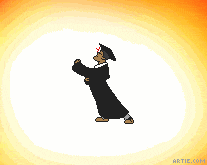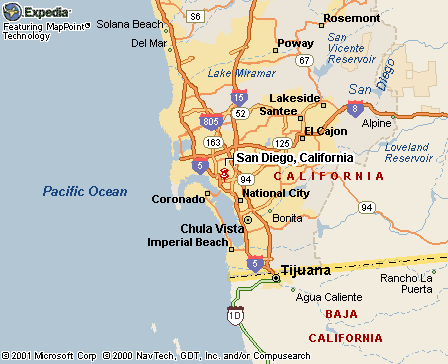|
|
Canku Ota |
|
|
(Many Paths) |
||
|
An Online Newsletter Celebrating Native America |
||
|
September 20, 2003 - Issue 96 |
||
|
|
||
|
Indians' College Numbers Grow by Degrees |
||
|
by Eleanor Yang and Chet Barfield
- Union-Tribune
Staff Writers
|
||
|
A member of Northern California's Washoe Indian tribe, she has high hopes of attending a top university. She might make it. She's part of a small but growing number of American Indian students setting sights on a college degree. They're trying to beat the odds. For decades, Indians have consistently composed the smallest fraction of college students in San Diego County and nationwide, usually less than 1 percent. While those numbers reflect their correspondingly small slice of the general population, the growth in number of Indians graduating from college is being far outpaced by other groups. Over the past quarter-century, American Indians' share of all degrees granted grew from 0.4 percent to 0.7 percent. In that same period, bachelor's degrees earned by Hispanics increased from 2 percent to 6.2 percent, according to the National Center for Education Statistics. Asians' share of degrees jumped from 1.5 percent to 6.3 percent, and blacks' portion grew from 6.4 percent to 8.9 percent. In comparison, white students' portion of degrees dropped from 88 percent to 74.5 percent. For American Indians, the long-term consequence of the low figures can be stifling, especially as they evolve and become more interactive with the outside world. Spurred by casinos and other developments, tribes for the first time are becoming major players in business, politics and the non-Indian communities around them. But Indian educators worry that without a college education, the next generation of leaders won't be as prepared to run their businesses, protect their legal rights and improve their reservations. One of the best things about college, they say, is that it teaches students about a world bigger than the one they come from. Tribal educators attribute low Indian enrollment to many factors, starting with generations of isolation, poverty and low self-esteem. Strong communal ties to "the rez" make students reluctant to go off to college. The pattern has been reinforced, local scholars say, by public school teachers who don't push Indians toward the college-prep track and by universities offering little to pull them in. But that may be changing, through outreach programs, community colleges and a growing awareness among Indian youth that they can help their tribes by educating themselves. "Because of our history of failure in formal education, it's not something we'll be able to turn around overnight," said Gerald Gipp, executive director of the American Indian Higher Education Consortium, based in Virginia. "But we're making good gains and seeing more people graduate." Breaking
the mold By the 1960s, self-determination reforms spurred creation of the first tribal colleges, specialized community colleges on reservations that serve as a bridge to four-year institutions. Tribal colleges, numbering 58 nationwide, are expanding educational frontiers for thousands of Indians. But they're having only limited success in spurring transfers to larger universities. At the University of California San Diego, where American Indians made up less than 1 percent of last year's undergraduates, Geneva Lofton Fitzsimmons' job is to drive those numbers higher. A college-educated member of North County's La Jolla Indian band, Fitzsimmons grapples with three obstacles: public schools that steer Indians toward less-rigorous work, tribal mentality that sets the high school diploma as the main goal and universities that lack courses or an environment to attract Indian students. Joe Chavez, 17, a member of the San Pasqual band near Valley Center, remembers the third-grade teacher who told him and three cousins they wouldn't amount to anything. "We were late to class, and she told us we were going to end up in Juvenile Hall," he said. "She said we were no good." He didn't listen. The lanky kid with the long ponytail made the tough screening to get into a UCSD summer program called Young Native Scholars. For two weeks in August, Chavez and 23 other teens lived on campus, exploring technology, native culture and physical fitness in a program intended to whet their interest in college. Chavez has his sights set on UC Santa Cruz, then Harvard Law School. But he and others in the UCSD program said many of their peers aren't pursuing higher education. "Most of my friends, they want to go out and party. Getting an education is not as important," said Beda Calac, 17, of Rincon. None of her three older siblings finished high school, but she intends to go on to study performing arts and psychology. Dwight Lomayesva, who runs a mentor-tutoring program for reservation youth at San Diego State University, says most Indians don't grow up expecting to attend college. "When families raise their kids, it's not like they have that much exposure to the college atmosphere or what higher education is all about," he said. "They're more inclined to say, 'If you graduate (high school), that's the greatest thing in the world.' " Of a typical high school graduating class, maybe one-third of Indian students will attend a community college, but only a fraction will go on to a four-year university, said Lorraine Orosco, who runs a tribal education center serving eight North County reservations. Most college students and professors don't understand how deeply tied American Indians are to their extended families and the tribal community, as Orosco experienced firsthand when she commuted from the San Pasqual reservation to UCSD in the early '90s. She sometimes had to miss class for family gatherings, tribal meetings or funerals that lasted for days. "Going to UCSD and even being that close to home, I can tell you it was a lonely place," she said. "There was nothing that reinforced Native American culture." Most local Indians who go beyond high school opt for community colleges, such as Palomar College or Sycuan's tribally affiliated DQ University. Those schools help Indian students retain their cultural identity, said Linda Locklear, a Lumbee Indian and a professor in Palomar's American Indian Studies department. Unlike Palomar, which has satellite campuses on some North County reservations, most universities don't have Indian language courses or Indian studies majors. And they tend to have few, if any, Indian faculty members, Locklear said. She is not surprised about the local figures. At UCSD, American Indian undergraduate enrollment fell from 127 a decade ago to 91 last year. At SDSU, it has dropped 16 percent, to 199, since 1995. Cal State San Marcos had 40 American Indian students seven years ago; it had 44 last year. SDSU offers an American Indian studies minor, but most of the 400 students taking those classes are non-Indian, department chairwoman Linda Parker said. Indian students want relevant courses, Palomar's Locklear said. "Kids are not going to get a college degree and move to Los Angeles and get a job working in a bank," she said. "They need to be trained in jobs that people in the (tribal) community can benefit from." Casino
money But most tribes require only a high school education for members to be eligible, at age 18, for casino dividends called "per capita" payments. Depending on the tribe, the size of the casino and how long the casino has been in business, per capita can range from a few hundred to several thousand dollars a month. Plus, 18-year-olds get huge lump payments of funds set aside during their childhood. The money can stifle ambitions. Tribal educators hear students say they won't need college or even a job; they'll have per capita. "The message that we're trying to present is we all need that education for protection of our sovereignty and our water rights," UCSD's Fitzsimmons said. "We need to speak for ourselves and run our own businesses." For those who want to go to college, the competition is increasingly fierce. More seniors than ever are graduating from high school, making it harder to get into top universities. Meanwhile, state budget cuts are forcing California universities to decrease enrollment while raising student fees as much as 30 percent. A
better future? Indian graduates are leading outreach programs such as the one at UCSD, helping younger tribal members aim for college. For some, like 17-year-old Rosie Clayburn, it involves challenges as basic as going three days between calls home to her reservation on the California-Oregon border. "It's pretty hard," she said, "but I think it's good preparation." Gipp, of the Indian education consortium, expects the numbers to gradually increase, in "a long, slow, frustrating process." Teens in the UCSD program, like Emerette with her notebook list, hope to change the statistics one at a time. "I want to go to Harvard and be a tribal lawyer," she said. "I want to be the first girl in my family to do something challenging." |
|
|
www.expedia.com |
|
|
||
|
|
||
| Canku Ota is a free Newsletter celebrating Native America, its traditions and accomplishments . We do not provide subscriber or visitor names to anyone. Some articles presented in Canku Ota may contain copyright material. We have received appropriate permissions for republishing any articles. Material appearing here is distributed without profit or monetary gain to those who have expressed an interest. This is in accordance with Title 17 U.S.C. Section 107. | ||
|
Canku Ota is a copyright © 2000, 2001, 2002, 2003 of Vicki Lockard and Paul Barry. |
||
 |
 |
|
|
The "Canku Ota - A Newsletter Celebrating Native America" web site and its design is the |
||
|
Copyright © 1999, 2000, 2001, 2002, 2003 of Paul C. Barry. |
||
|
All Rights Reserved. |
||
 A
handwritten list in 13-year-old Emerette Frank's binder keeps her
focused on her strategy for getting to college:
A
handwritten list in 13-year-old Emerette Frank's binder keeps her
focused on her strategy for getting to college: 